It’s my favorite thing: art quilts as advocacy.
So I was quick to answer the call from Quilt for Change and The Advocacy Project. Under the initiative, known as Sister Artists, survivors of gender-based violence created embroidered blocks depicting scenes of their life in Mali. Quilters — mostly American — were invited to choose a block and turn it into an art quilt. The plan is for the quilts to be posted online, exhibited, and auctioned. And then all proceeds will go to support the artists in Mali and Sini Sanuman (“Healthy Tomorrow”), a Malian advocacy program for women’s rights.
That sounded totally worthwhile to me. I especially liked the roundhouses on the block shown at the upper left, and below. For reasons of safety and policy, the young woman, i.e., Sister Artist, may not be named. Nevertheless, my priority was to honor her and her work.
I immediately envisioned the lovely, pictorial embroidery surrounded by geometric designs used in Mali villages. A good friend, artist Janet Goldner, visits Mali quite frequently, and shared pictures she recently took of a house painting festival that takes place once a year in Siby, a village about 30 miles from Bamako (the capital and largest city in the country). Women draw from the local clay colors for their color palette. Wow, right?! So with the embroidery at the heart of my art, I set out to build around it, log-cabin-style.
The embroidery background was not square, so I went with an assymetrical medallion setting, sketched out on graph paper. Now, I invariably depart from my original plan fairly quickly, but this time — surprise, surprise — I basically stuck to it. Oh, I didn’t keep to a specific scale, nor did I measure, cut, and sew precise patchwork or applique circles as dictated by the sketch. Instead, queen of the quick and dirty that I am, I used freehand-cut fused triangles and patterned fabric from my stash of African, batik, and hand dyed and printed fabrics. There was quite a bit of seat-of-the-pants fudging-it as I added rounds of borders. Conveniently, African beads camouflage spots where angles and corners lack sharp points.
I hope my piece does justice to the embroidered block. I hope it calls attention to the need for human rights, justice, and equality in Mali, as they are needed and deserved everywhere in the world. My efforts here are a small show of support, relatively insignificant. If I could, I would pin a medal on each courageous woman anywhere who struggles and strives and supports her sisters. For now, my Mali Medallion will have to do.
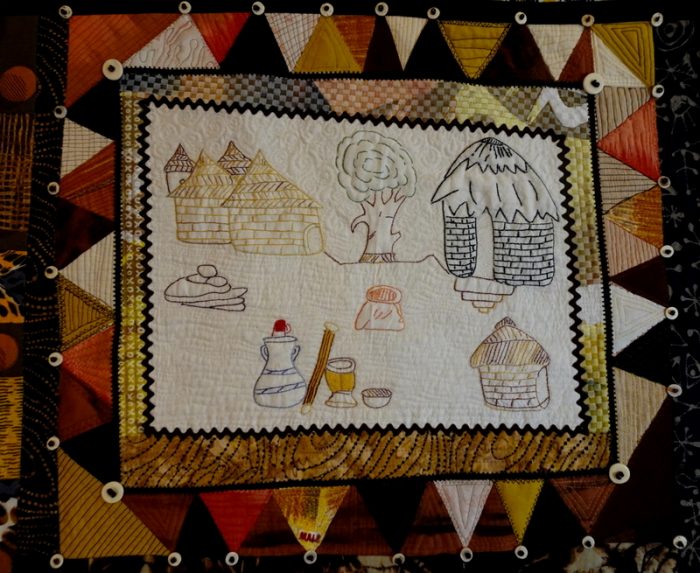


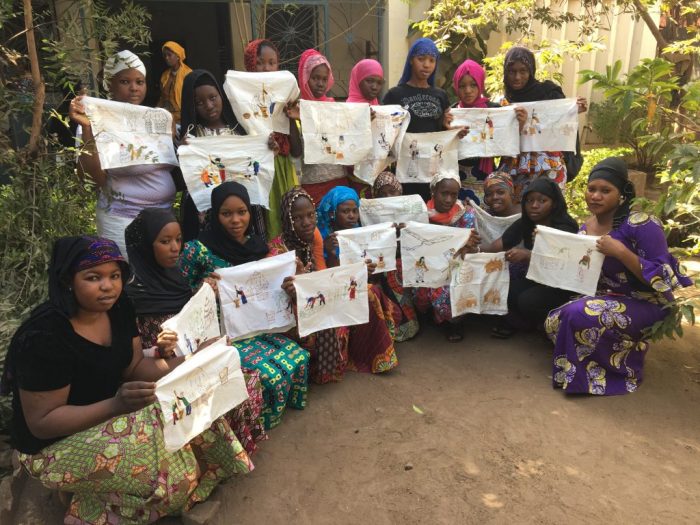
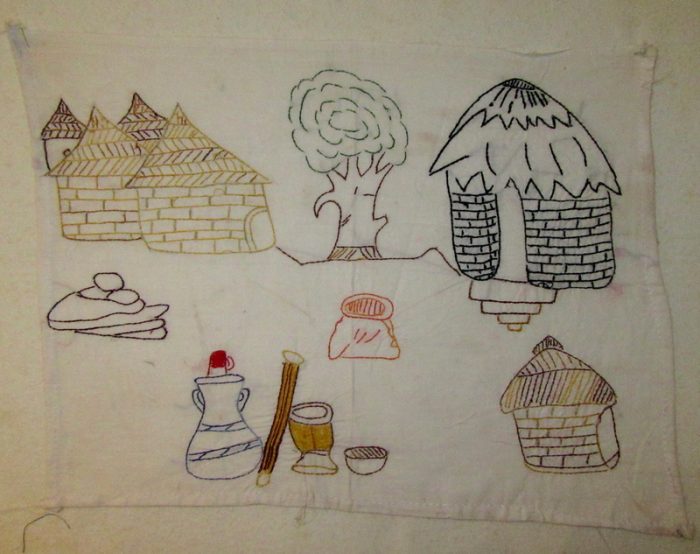
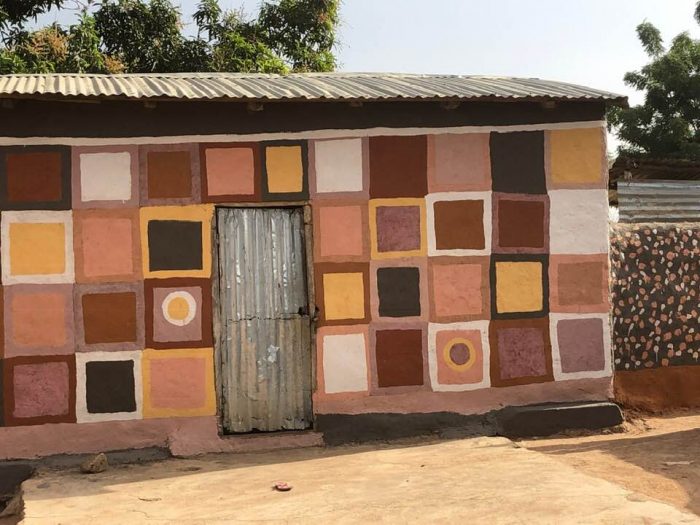
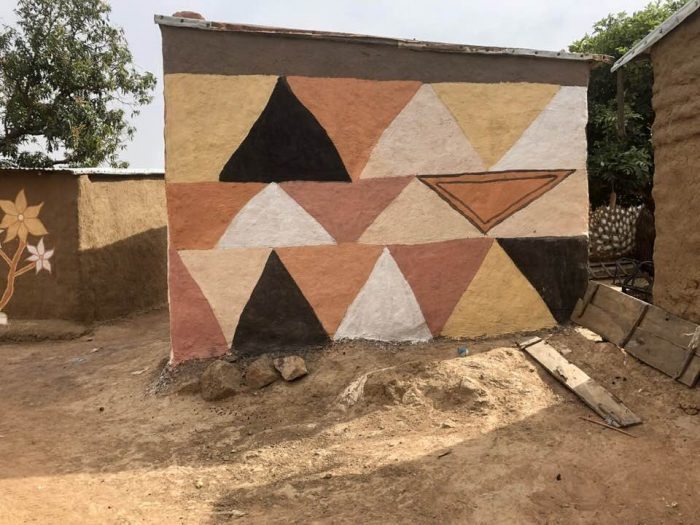
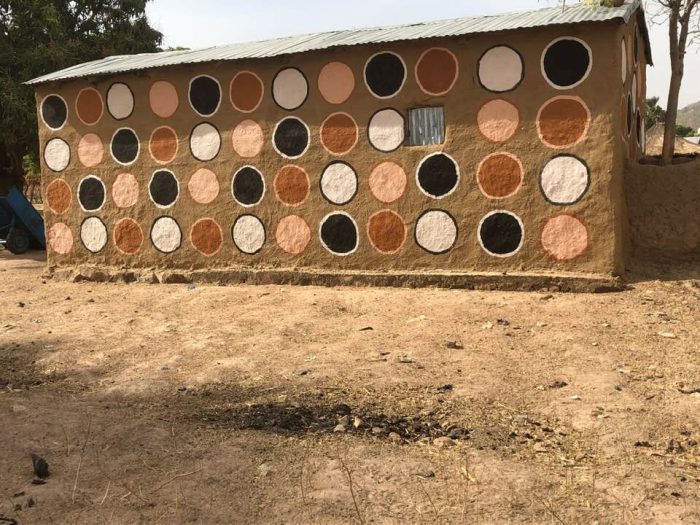
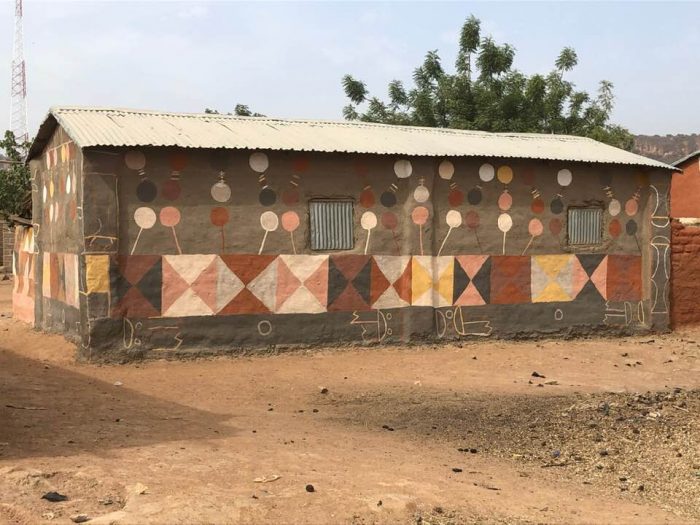
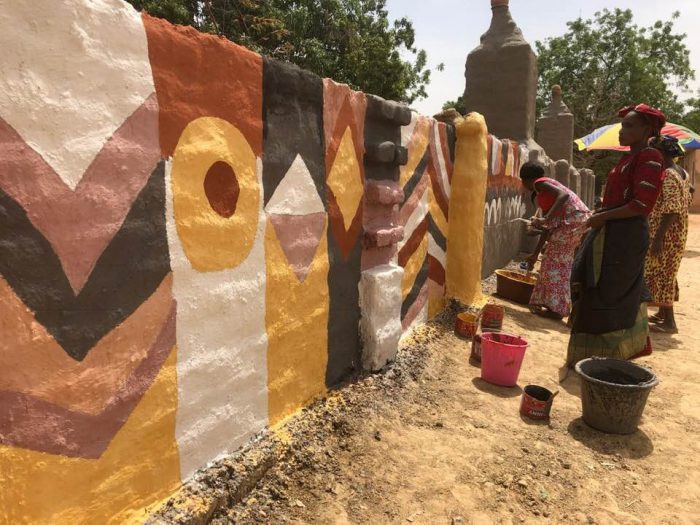
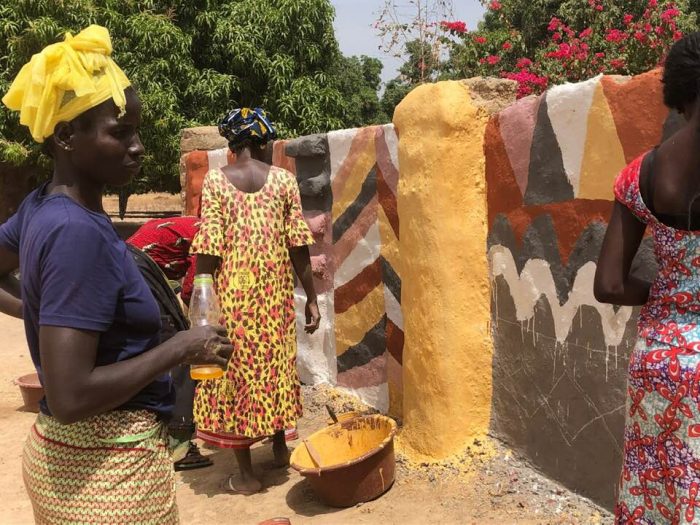
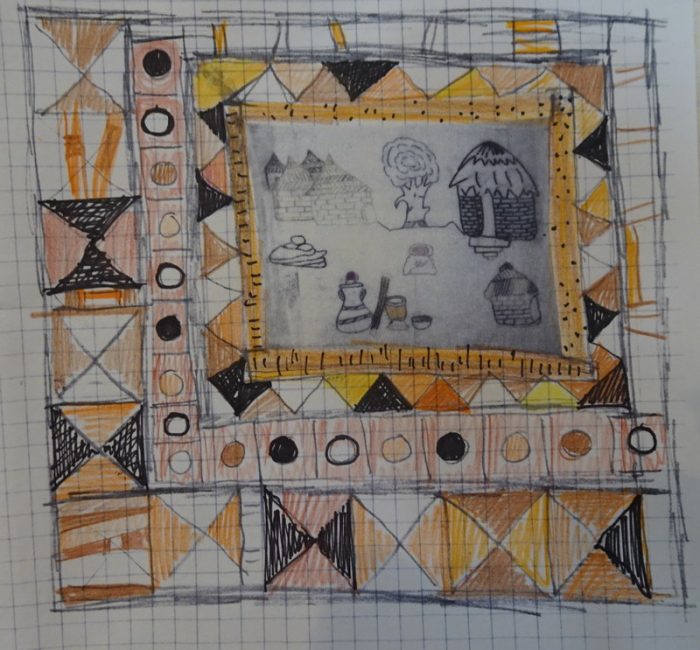
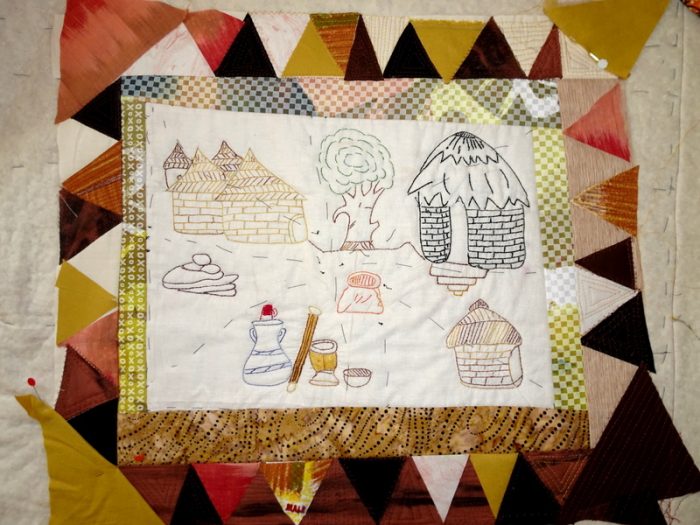
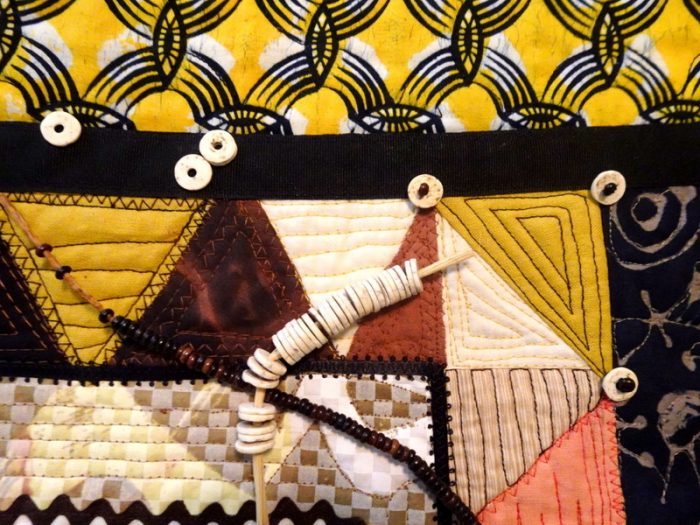
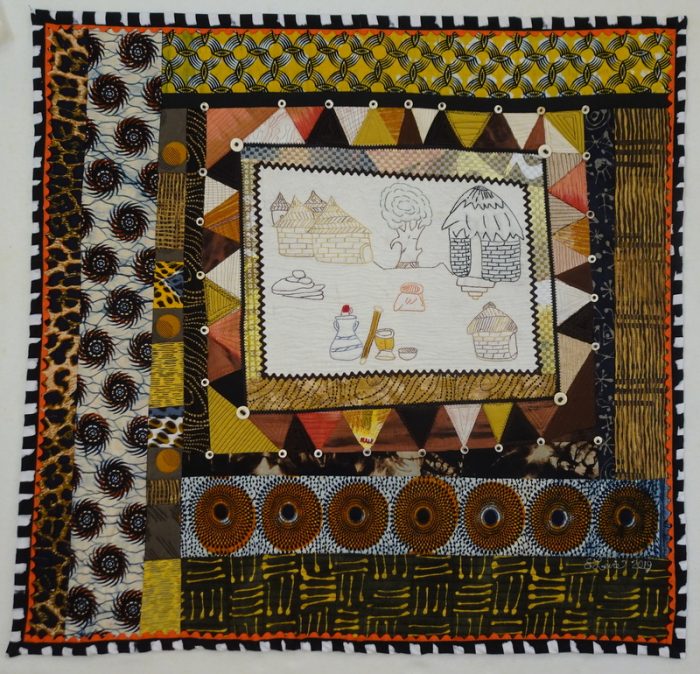
[…] By the way, two years ago, I participated in a similar project celebrating the creativity, in embroidery, of young women in Mali. That time, security issues surrounding these women who were victims of sexual violence prevented me from knowing the artist’s name. Nevertheless, I was proud to support the cause and create a Mali Medallion around the charming village scene. Read my story about the making of that art quilt here. […]